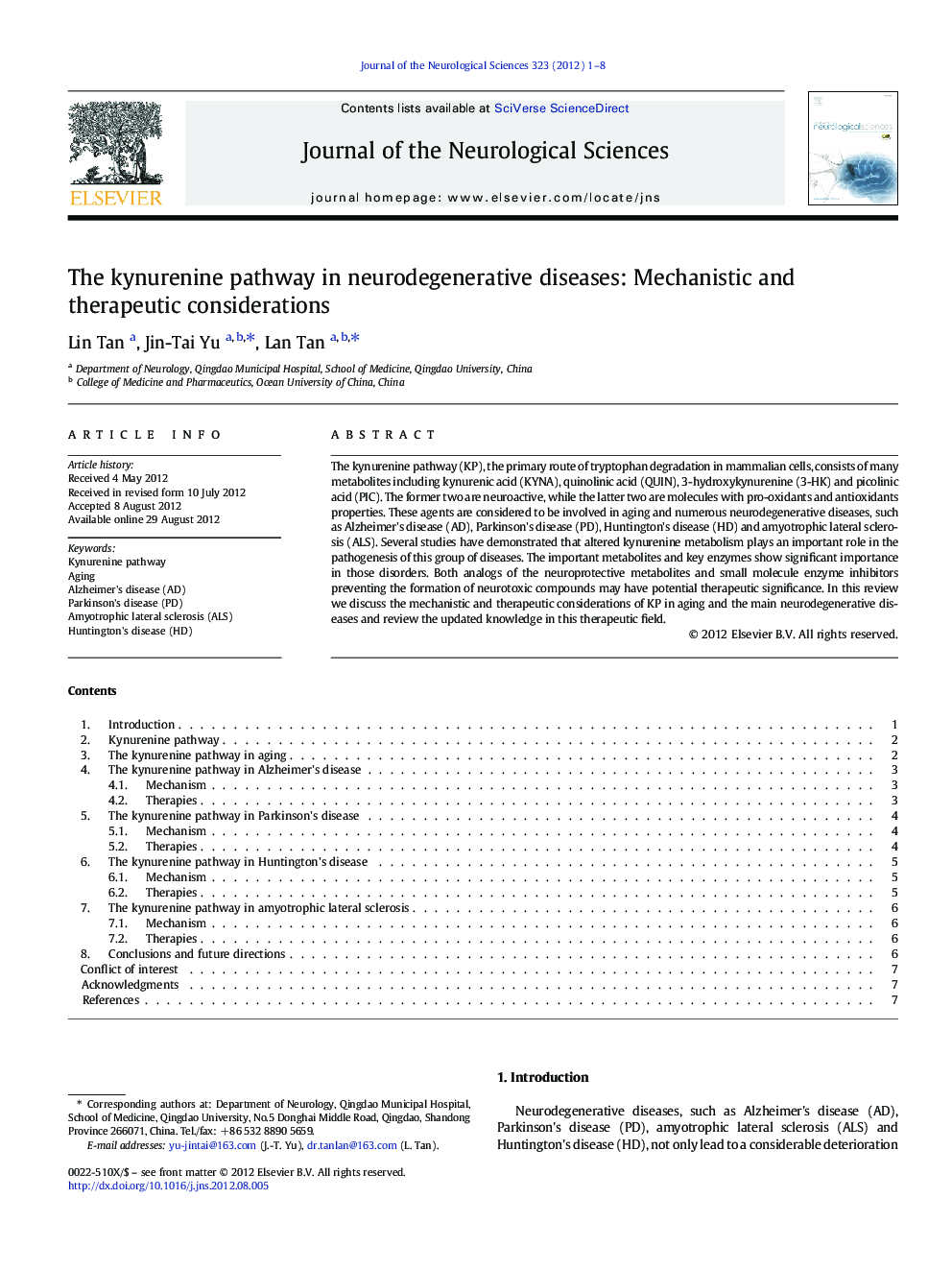| Article ID | Journal | Published Year | Pages | File Type |
|---|---|---|---|---|
| 1913788 | Journal of the Neurological Sciences | 2012 | 8 Pages |
The kynurenine pathway (KP), the primary route of tryptophan degradation in mammalian cells, consists of many metabolites including kynurenic acid (KYNA), quinolinic acid (QUIN), 3-hydroxykynurenine (3-HK) and picolinic acid (PIC). The former two are neuroactive, while the latter two are molecules with pro-oxidants and antioxidants properties. These agents are considered to be involved in aging and numerous neurodegenerative diseases, such as Alzheimer's disease (AD), Parkinson's disease (PD), Huntington's disease (HD) and amyotrophic lateral sclerosis (ALS). Several studies have demonstrated that altered kynurenine metabolism plays an important role in the pathogenesis of this group of diseases. The important metabolites and key enzymes show significant importance in those disorders. Both analogs of the neuroprotective metabolites and small molecule enzyme inhibitors preventing the formation of neurotoxic compounds may have potential therapeutic significance. In this review we discuss the mechanistic and therapeutic considerations of KP in aging and the main neurodegenerative diseases and review the updated knowledge in this therapeutic field.
